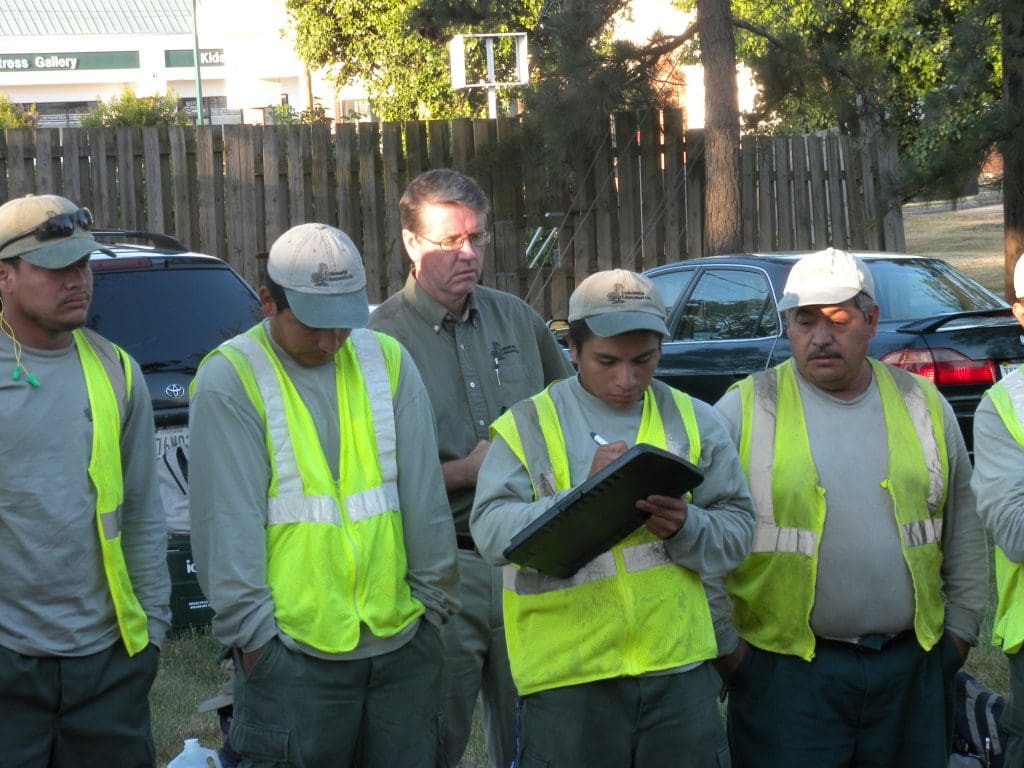
At Environmental Enhancements, Inc., a landscaping company based in Sterling, Virginia, a robust safety program is helping to keep all team members safe. HR Manager Carmen Kesteven says that safety is the company’s number one priority. She shares a few things that have worked best for them.
Everyone Starts “New”
One thing that Kesteven says they do is start everyone as “new,” no matter how much previous experience they’ve had. Just because they’ve worked somewhere else doesn’t mean that they were properly trained on safety.
“When you start here, you start as new, no matter what,” she says. “It’s great that you have previous experience, but we’ll still assign you to another worker until we know that you know our rules and our procedures.”
Safety is Taught in English and Spanish

Kesteven says that another critical consideration is the employee’s first language. With such a significant portion of the labor force being Hispanic at Environmental Enhancements, Kesteven says that the company’s safety manual — as well as all spoken training sessions — are available in both languages.
“You have to know your people and what they need,” she stresses. “We provide all documents and training in both English and Spanish — no exceptions.”
Thinking Beyond Language
But Kesteven says that the need to adapt training in a way that team members can fully understand stems far beyond language. She says that some crew members have not finished high school — and it’s essential that training also takes into account “level of education.”
She recalls the story of an incredibly bright and hardworking team member who was so committed to working — but didn’t know how to write. That was a problem when it came time to fill out an application.
Kesteven says it’s important that safety training is meeting people where they’re at.
Regardless of education, some people just learn differently from others. Some are visual learners while others learn better by reading. Some people are hands-on and need to get out there and try something. Kesteven says that all of this must be considered if you truly want to know that team members understand what they’ve been taught.
Add Some Variety

In addition to switching up the way that safety is taught, Kesteven says it can also be beneficial to switch up who is teaching it. Different team members have different ideas and perspectives — plus they can help keep repetitive topics fresh.
“It can be boring to have the same person constantly in front of the team giving safety talks,” she explains. “So, we try to switch it up. I believe it’s important to get different people to run the meetings. Get a crew manager up there and running it. It’s a really great way to get everyone more engaged.”
Make Safety an Everyday Thing
Finally, Kesteven says that in order to truly become part of the company’s culture, safety is talked about on an ongoing basis. It can’t be a one-time thing. Safety is not just a topic for official meetings but for everyday conversations, too.
“Right now, we are constantly repeating recommendations for COVID-19 protocols so we’re giving lots of reminders about hand sanitizer and disinfectants and paper towels,” Kesteven says. “But we also have open communication. We encourage everyone to talk about how they’re feeling and what’s going on. We’re inspecting as we go, always making sure that we’re doing things the right way and learning if there are mistakes. It comes down to wanting to know that everyone goes home the way they came in. We care about our people and we want them to be safe.”
Join NALP’s Safe Company Program. It will help you build a stronger safety culture which will help you reduce injuries and hazards, demonstrate your commitment to a safe workplace, and lower your costs.

